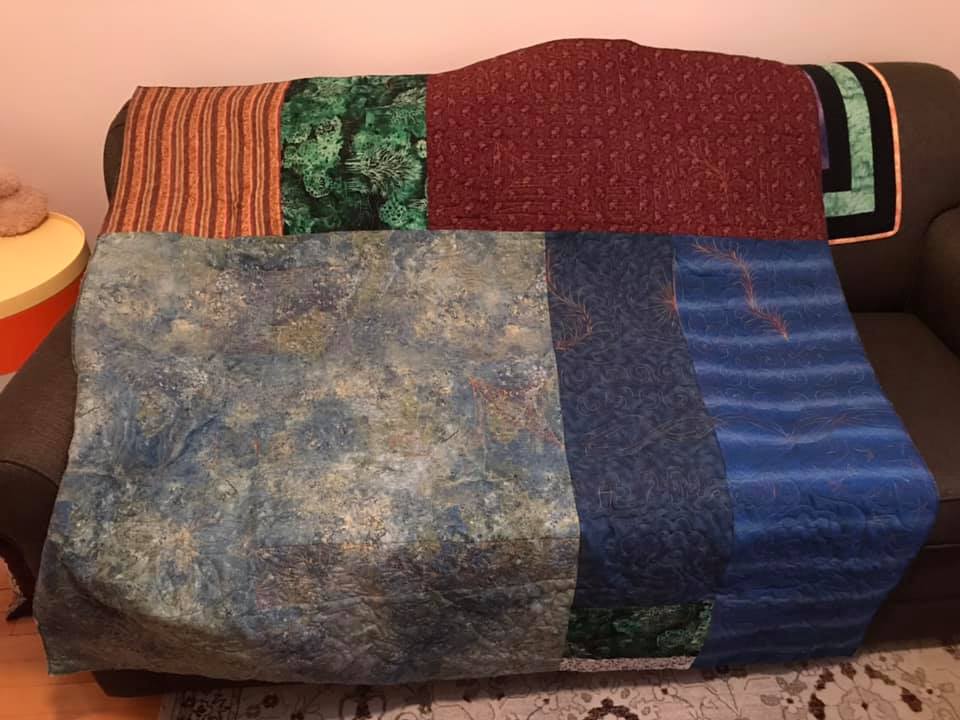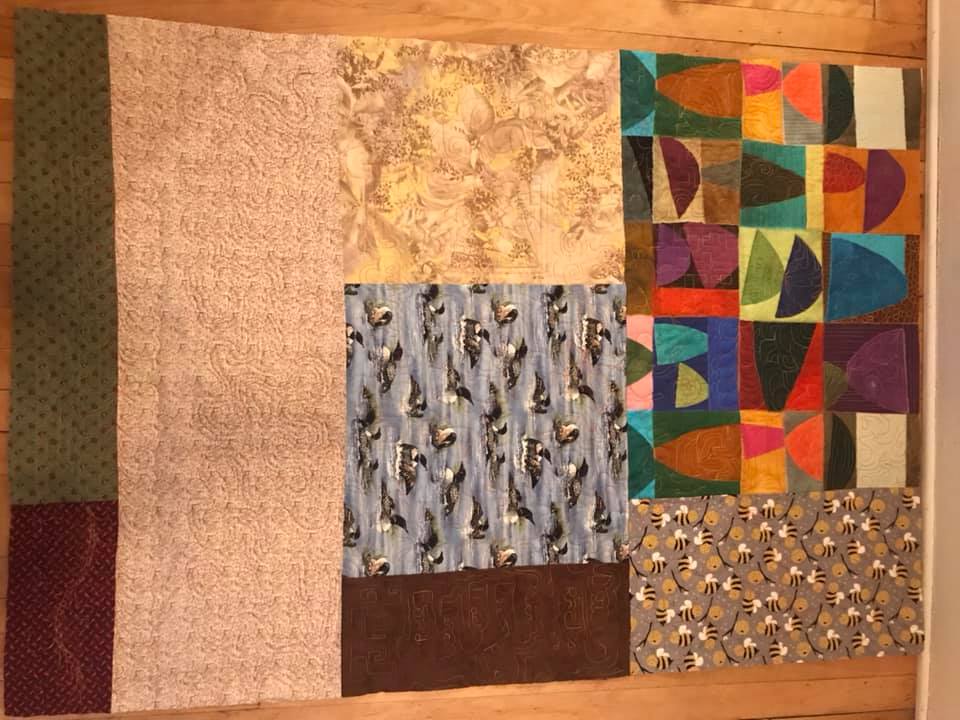Do you wonder about how to back your quilts? Do you struggle to find the right backing? Should you, could you use a sheet? What about a softer fabric, like flannel or minky? The short answer for the last two questions is, if that’s what you want to do, then go ahead. But here is the longer answer if you’d like to learn more.
Sheets as backings
Many experienced quilters will tell you not to use sheets as backing. It may be counterintuitive. But it seems that the higher the thread count, the worse it may be for quilting. The tight weave makes it harder to get the needle through. And of course, many sheets are not 100% cotton. If you have a cotton top, it’s usually better if you also have a cotton backing. I’ve also heard some quilters say that sheets as backings don’t last as long as quilting fabric. That being said, many quilters do use sheets and have no problems with them.
I used sheets in the beginning, because I didn’t realize there was a difference. I tend not to now, although I did use sheets for my practice Ugly Dog Quilts when I first got my longarm machine. Ugly Dog Quilts are what I make when I’m learning a new technique. Since I don’t like to waste fabric, I do something useful with it.
I dig through my stash to find old, “never going to use” fabric. I sew them together with no thought to patterns or colors, back them with sheets and practice away. When they’re done, I serge stitch the edging. I now give them to my favorite dog adoption group here in Montreal, The League of Extraordinary Greyhounds. I figure that the dogs don’t care if the quilting isn’t up to par or the tension is off. They just have a nice cozy quilt to sleep on.
I am also realistic and I know that not everyone can afford to buy backings or must use what they have on hand. So, if you want to use a sheet, I’d advise that you ensure it’s not too high a quality in terms of thread count, and that it be washed first to remove any sizing or anything that was applied during the manufacturing process.
Wide backings
Most quilt shops sell extra wide fabric that we can use for backing. These are great because at 108 inches, unless you’re making a monster quilt, you’ve got the perfect size for the back with no seam. These backing fabrics may seem expensive per yard or metre, but you don’t need to buy as much length. If I find a wide backing I really like, I tend to buy extra because I’ll often use some in some quilt tops too.
Regular quilting fabric
At 45 inches wide, regular quilting fabric has to be pieced for a backing if your quilt is any larger than 42 inches or so. Regular fabric is great for baby quilts, wall hangings, and some lap quilts. And that’s fine. Most of my quilts have some sort of pieced backing. I make some backings out of leftovers from the top or I match with something I have in my stash, but with a couple of rules.
I don’t do a seam right down the center either vertically or horizontally, nor do I put the seams close to the center. If they’re close, it can look like you tried to get in the middle but you missed. I don’t put them in the middle because when quilts are folded and unfolded, you put stress on the seams. So I offset them deliberately. I also try not to do a pattern because, although I try my best to ensure my backing is perfectly straight, I can be off, and then any pattern is off and I’ll see that every time I look at the quilt.
I don’t put too many seams in the backing if the quilt top is heavily pieced. Seams and intersections can be difficult to quilt. If you’re hand quilting, too many seams makes it hard to get small even stitching. If you’re machine quilting, intersecting seams may be too bulky and cause skipped stitches. These are the quilts that I tend to go for the wide backings.
Other fabrics as backings
If you’re looking at flannel or minky – or anything else – why not? You just need to be aware that the thickness or slipperiness of the fabric can have an impact on the stitching. But, this really is a matter of if you like it, you want to try it, and you have it – go for it. I do strongly recommend that you have a practice piece first, the same type of top fabric, the same batting, and your backing. Practice stitching to see how it feels, to be sure tension is correct if you’re machine quilting, and how slippery or awkward the quilting sandwich may feel.
Choosing colors
If you have trouble choosing colors for your quilt backing, you’re probably overthinking it. If I am doing a quilt that will have thread changes because I use different colors, I try to pick a busy backing, so the changes don’t show so obviously. If I’m quilting something heavily, I may pick a solid light color, to show off the quilting in the back. Color-wise, I may stick with the main color of the quilt, but I may also pick a lesser used color from the pattern, just because I want to. And of course, there are times when I’m in a rush and I just pick whatever is closest and seems to fit.
I can tell you that in almost 30 years of quilting, I have never regretted a backing choice.


